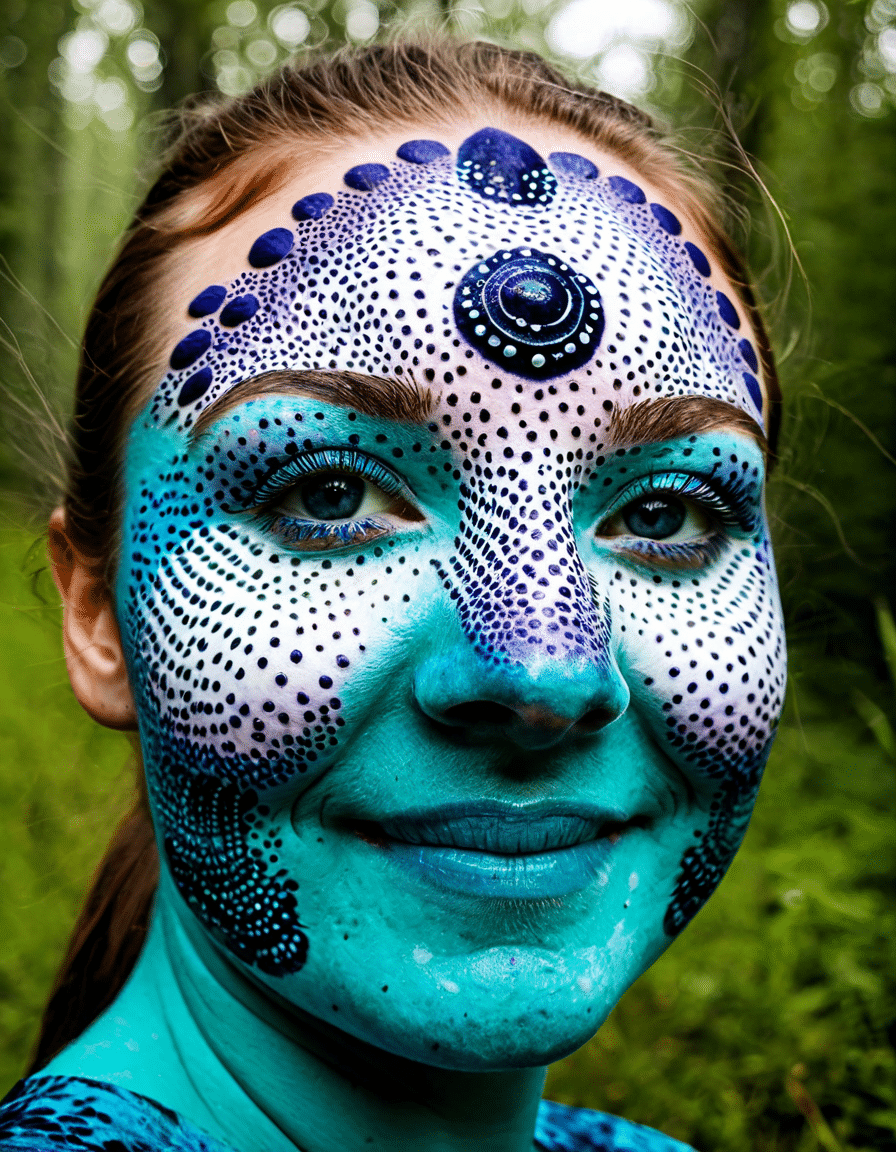Dermatomas are specific zones of skin linked to sensory fibers from a single spinal nerve root. These patterns are vital not just for dermatologists but also for anyone keen on understanding their health better. By diving into the intriguing universe of dermatomas, we can illuminate their importance and how they relate to various medical conditions that affect our everyday lives. After all, awareness can empower us to communicate effectively with our medical professionals—be it a dermatologist or a family doctor.
So, what makes dermatomas so fascinating? Think of them as the body’s map, with each section telling its own story about health and well-being. From pinpointing nerve issues to diagnosing skin diseases, understanding these skin patterns opens doors to better health management and treatments. Let’s embark on this journey together and uncover the specifics that make dermatomas a pivotal part of medical dialogues.

Top 7 Fascinating Dermatomas Everyone Should Know
1. Cervical Dermatoma
Let’s kick things off with cervical dermatomas, which span from C1 to C8, covering the neck and arms. These regions are essential for diagnosing conditions like cervical radiculopathy, where nerve compression leads to pain and tingling. A classic case is upper extremity pain from these dermatomas, which often lends itself to treatments such as physical therapy or nerve blocks. Think of it this way: if you’re experiencing neck pain or numbness in your arms, these dermatomas hold critical clues.
2. Thoracic Dermatoma
Moving down to the thoracic region, we find dermatomas T1 to T12 affecting the trunk. Shingles, or herpes zoster, is a common condition that surfaces in a specific thoracic dermatoma, notably T4, causing pain around the chest. A visit to a dermatologist might lead to conversations about the shingles vaccine, which is crucial for prevention. So, whether you’re dealing with shingles or curious about vaccines, the thoracic dermatomas play a significant role in your health narrative.
3. Lumbar Dermatoma
Then we’ve got the lumbar dermatomas ranging from L1 to L5, which cover the lower back and legs. This area is notorious for issues like sciatica, often linked to herniated discs. People facing these troubles might find themselves exploring innovative treatments, such as minimally invasive surgeries that quickly restore functionality. If you’re feeling a pinch or numbness down there, lumbar dermatomas might be the missing piece of the puzzling pain.
4. Sacral Dermatoma
Next on the list are the sacral dermatomas, from S1 to S5, encompassing the buttocks and back of the legs. Pressure during childbirth can affect these areas, sometimes leading to temporary nerve issues. Many medical professionals recommend physical therapy to assist recovery post-delivery. If you’ve brought a new life into the world, understanding these dermatomas can help you better navigate the healing journey.
5. The Role of Variation in Dermatomas
What’s truly interesting about dermatomas is the variation from person to person. Individual differences can dramatically impact these skin patterns, complicating diagnoses. Imagine someone with a unique sensory overlap—this means their dermatomas might not follow typical patterns, making it tricky for dermatologists to provide accurate care. Recognizing these anomalies is key in troubleshooting skin and nerve issues.
6. The Impact of Genetics on Dermatomas
Don’t forget the genetics! They play a significant role in dermatological conditions associated with specific dermatomas. For example, someone with Ehlers-Danlos Syndrome might show symptoms like hyperelastic skin. Exceptional research led by dermatology experts, like Dr. Marla B. in San Francisco, sheds light on the genetic underpinnings here. Genetic influence adds another layer to our understanding of dermatomas, revealing a deeper connection between our DNA and skin patterns.
7. Emerging Research on Dermatomas and Chronic Conditions
Last but not least, exciting studies are investigating the relationship between dermatomas and chronic conditions such as fibromyalgia. Recent research suggests that stimulating certain dermatomas could ease widespread pain, leading to innovative therapeutic approaches. If this trend fascinates you, keep your eyes peeled for studies emerging from major medical journals.

Innovative Approaches in Dermatology: Bridging Science and Art
The intricate realm of dermatomas isn’t just about skin. It serves as a bridge to new avenues in medical diagnosis and multi-specialty treatments. As dermatologists delve into such complexities, advancements in technology and genetics enrich our comprehension. Take teledermatology, for example—this breakthrough allows patients access to specialized care like never before, bridging gaps in awareness around dermatomas and their implications.
Ultimately, the allure of dermatomas lies not just in their clinical implications but in the tales they unveil about our health. By exploring these connections, we cultivate a richer appreciation of our bodies’ stories, revealing the intricate dance between science and health care artistry. So, next time you think of your skin or happy memories tied to Nirvana, remember that beneath the surface lies a map filled with stories waiting to be understood.
In closing, here’s hoping this journey into the world of dermatomas not only educates but also inspires you to take charge of your health and engage thoughtfully with your healthcare providers. After all, knowledge is the melody that helps us move smoothly through life, just like the beats of your favorite track from Boku no Hero or a classic tune from Scarlett Jones. Rock on, healthy travelers!
Dermatomas: Discovering the Patterns of Our Skin
What Are Dermatomas?
Dermatomas are fascinating skin patterns that correspond to specific nerve roots in the spinal cord. Each section of skin, known as a dermatome, receives sensation from a single spinal nerve. So, if you think about it, your body is like a live map, with each patch of skin indicating a different area of nervous influence. This means that if you experience pain in a particular dermatome, it can signal issues linked to the underlying nerves. Quite interesting, huh? Speaking of readings our body maps, did you know that Itiosis Arlequin showcases a bizarre genetic skin disorder? The intricate details of skin patterns can sometimes reflect deeper biological mysteries!
Fun Trivia About Skin Patterns
Now, here’s where things get intriguing! Dermatomas not only help with medical diagnoses but also have a captivating history. For instance, did you know that those distinctive blue And black dress memes had their origin in a simple photo? Just like those optical illusions, the perception of dermatomas can vary from person to person. Likewise, just as some might argue over Toluca Vs Mazatlan in a football match, interpretations of skin sensations are often a topic of discussion among healthcare practitioners. It’s a fine line between how well we understand our own skin!
Connections and Comparisons
You might be surprised to learn that while dermatomas relate closely to our nervous systems, there are also amusing encounters with our beloved pets. For example, the dalmatian lifespan tells us that these pets, much like humans, have distinctive health conditions mapped onto their DNA. Their health can also be linked back to genetics, just like our dermatomas. It’s curious how nature has woven such patterns and connections across species!
To round off this fun exploration, think about how quirks in skin can mirror our moods and lifestyles. Our skin might be the first place we show stress, akin to the emotions wrapped up in a quaker recall. Remember, like patterns in nature, our understanding of dermatomas can enhance how we view overall health. Truly, the human body draws unexpected parallels with other living beings, and that’s a thought worth pondering!

































